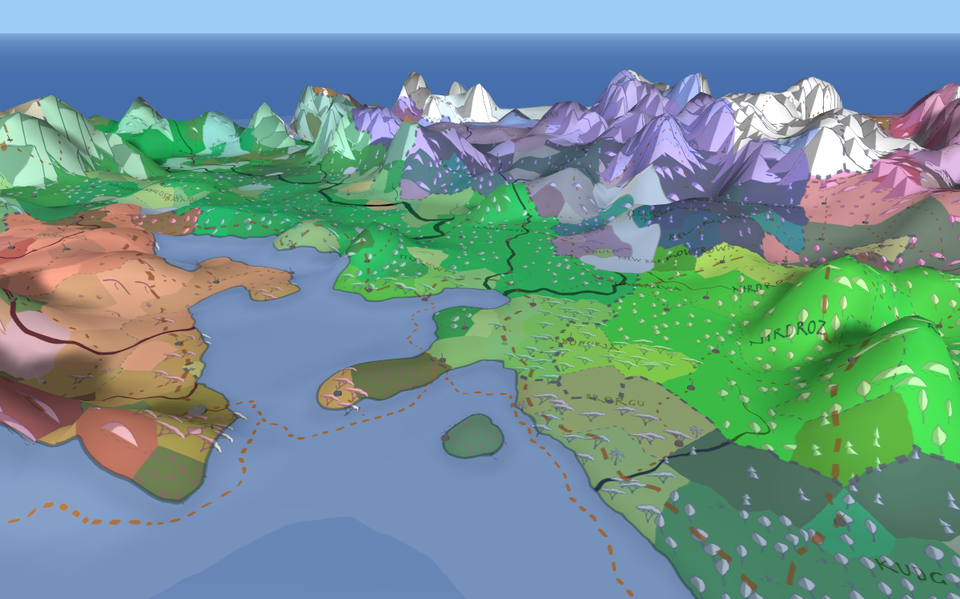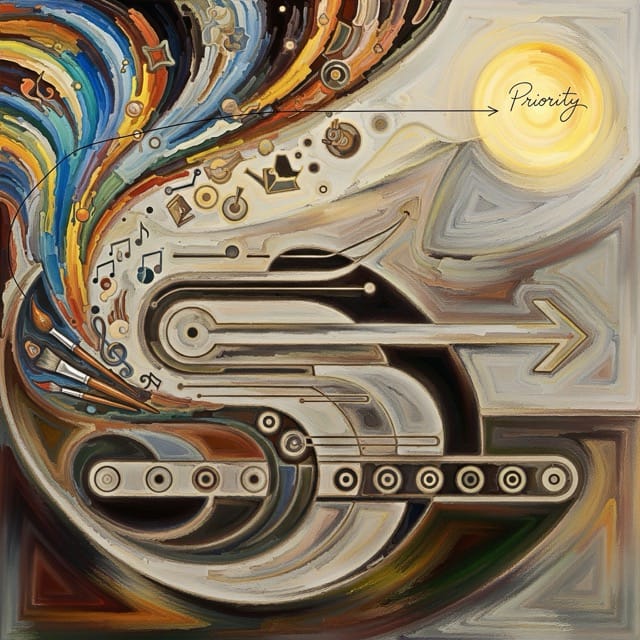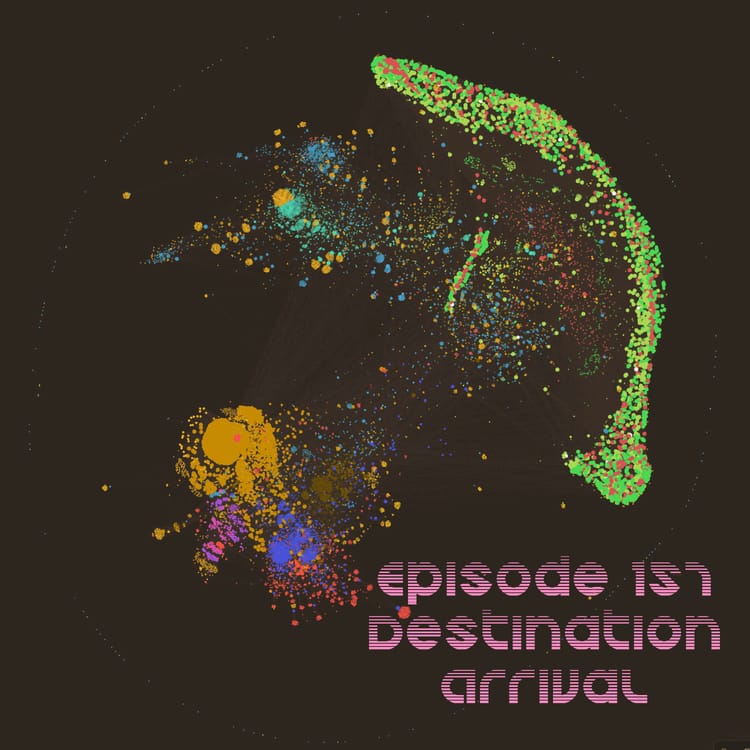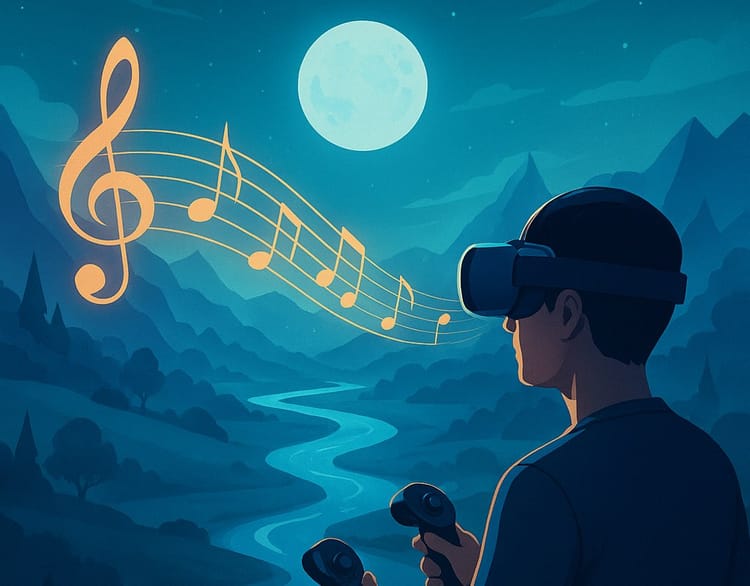Our Digital Art Foundation

From Algorithms to Aesthetics: Our Digital Art Foundation
By Vincent Janssen, Creative Director
As Creative Director for Eckenrode Muziekopname's expanding universe, I want to share our foundational approach to visual development—one that bridges the algorithmic precision of procedural generation with the intuitive flow of artistic vision.
The Art of Digital Foundation Building
When most people think of art direction, they imagine mood boards, color palettes, and concept sketches. While these remain essential, we've discovered something profound: procedural generation tools aren't just technical utilities—they're artistic collaborators.
Our creative process begins not with a blank canvas, but with intelligent algorithms that serve as our first creative partners. This isn't about replacing human imagination; it's about amplifying it through strategic digital reconnaissance.
Phase One: Macro-Geographic Canvas Development
Azgaar's Fantasy World Generator serves as our primary landscape architect. When we're developing the vast territories of Orbis—from the rolling meadows near Myranth to the mysterious Northern Boughs—AFWG gives us more than geographical accuracy. It provides atmospheric DNA.
Each generated region carries implicit lighting conditions, weather patterns, and topographical poetry that inform our entire visual philosophy. A mountain range isn't just elevation data; it's a statement about the harshness or grandeur of the civilizations that would emerge there. River systems become trade route narratives that influence our approach to architectural development and cultural aesthetics.
The genius lies in the emergent storytelling—when the algorithm suggests that a particular valley would naturally become a crossroads, we're not just seeing geography. We're seeing the birth of merchant cultures, the mixing of architectural styles, and the visual complexity that authentic worldbuilding demands.
Phase Two: Settlement-Level Architectural Research
Watabou's city and village generators function as our architectural anthropologists. When we input the parameters for a settlement—whether it's a bustling trade hub or a secluded druidic enclave—we're not just generating street layouts. We're conducting spatial psychology research.
How do buildings cluster around resources? What does organic growth versus planned development look like? Where do defensive considerations shape beauty, and where does pure aesthetic flourish? These algorithmic answers become the foundation for our architectural language development.
Each generated settlement becomes a case study in environmental storytelling. The curve of a road suggests the historical flow of commerce. The placement of districts reveals social hierarchies. The relationship between buildings and natural features tells us about the cultural values we need to represent visually.
Phase Three: Encounter-Specific Environmental Storytelling
One Page Dungeons provide our most intimate scale of visual reference—the tactical environments where stories unfold. These aren't just maps; they're emotional geography templates.
A tavern's layout suggests the social dynamics we need to capture. A forest clearing's configuration implies the lighting conditions and atmospheric mood we're pursuing. A dungeon's architecture reveals the aesthetic philosophy of its builders, informing everything from texture choices to color temperature decisions.
The Synthesis: From Data to Vision
This trilogy of tools creates what we call "coherent procedural aesthetics"—a visual foundation that maintains internal logic across every scale of our universe. The macro-geography informs the settlement development, which influences the intimate encounter spaces, creating a seamless visual narrative that feels authentic because it is authentic.
But here's where the real artistry begins: taking these algorithmic foundations and asking the deeper questions.
What would this landscape look like in the golden hour? How would these architectural materials weather over centuries? What cultural aesthetics would emerge from these geographical constraints? How do we translate topographical data into emotional resonance?
The Creative Director's Role: Translation and Amplification
My role isn't to override these algorithmic insights—it's to translate them into the language of light, color, texture, and emotional impact. When Azgaar suggests a certain type of coastal formation, I'm envisioning the quality of light that would dance off those cliffs at sunset. When Watabou generates a marketplace layout, I'm considering the interplay of shadows and the visual rhythm of merchant activity.
This methodology represents a fundamental shift in how we approach art direction for large-scale creative projects. We're not imposing arbitrary aesthetic decisions; we're discovering the visual DNA that already exists within the logical structure of our world.
Looking Forward: From Foundation to Manifestation
These procedural foundations are establishing the visual vocabulary for everything that follows. When we commission original artwork, when we develop our brand identity, when we create immersive experiences—everything will be rooted in this algorithmic authenticity.
We're building more than a visual style guide. We're cultivating a living aesthetic ecosystem that can grow and evolve while maintaining its essential character.
The next phase of our visual development will see these digital foundations transformed into original artistic expression—commissioned pieces that honor the algorithmic insights while pushing beyond them into truly visionary territory.
Stay tuned for updates on our artistic evolution. The best is yet to come.
Vincent Janssen is Creative Director at Eckenrode Muziekopname, where he leads the development of innovative multimedia experiences that merge cutting-edge technology with visionary artistic expression.



